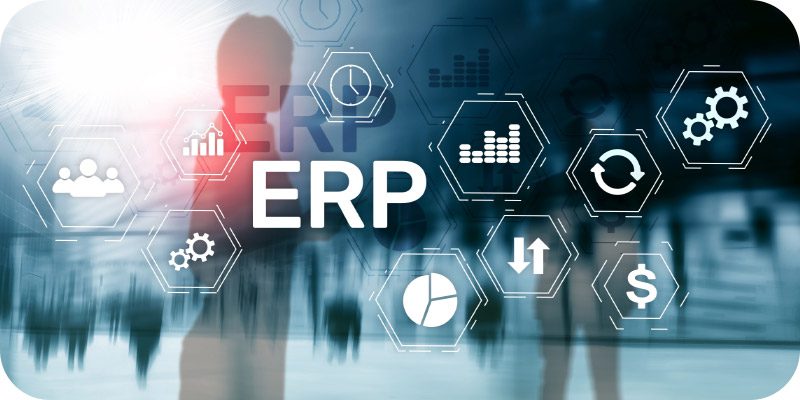The Main Components of ERP Software You Need


The editors at Solutions Review have outlined some of the critical components of ERP software that every company should prioritize when selecting a solution for their business.
Enterprise Resource Planning (ERP) is software that helps organizations manage various business processes, including inventory, order management, financials, human resources, and customer relationship management. An ERP system aims to provide a unified view of essential data and processes within an organization, thereby improving efficiency, visibility, and decision-making. An ERP system typically integrates data and processes from multiple departments and systems into a single, centralized system, reducing the need for manual data entry and reconciliation and providing real-time access to data.
Regardless of your company’s industry, there are some components that your ERP solution shouldn’t go without. Although you may need other features of ERP software, at minimum, prioritize the ones below.
The Main Components of ERP Software You Need
Financial Management
The financial management component within your ERP system stores, monitors, and analyzes your financial data, including accounts payable, accounts receivable, costs, budgets, and forecasts. It helps reveal insights into your spending so that you can discover profit trends and times of unusually high spending. You can then put that data to good use by changing whatever processes are causing lower profits or high spending, maximizing your profits while reducing costs.
The financial management component can also help improve cash flow, lower costs, and increase profitability while maintaining accurate reporting. Financial ERP software should ensure companies meet financial reporting and tax requirements with a single accounting, banking, and payment system. Keep in mind: it needs to allow for enhancements in economic performance with real-time information on expenses and revenue contribution.
Business Intelligence (BI)
Considering how many businesses today are attempting to create data-driven decision-making processes, BI has quickly become one of the most critical components of ERP software. The BI component of your ERP software collects and analyzes data, providing you with actionable insights related to your business processes. BI in ERP systems can be your organization’s eyes and ears, allowing you to monitor your key performance indicators (KPIs) and make changes when they aren’t where they should be.
Customer Relationship Management (CRM)
Your ERP system should help bring together data that enables salespeople and marketers to address customer needs, preferences, and buying patterns. A CRM component allows you to do this by keeping track of your customer and sales data within your ERP solution. The insights you can gain from a CRM component help optimize your marketing and sales efforts. It should also better manage invoicing activities, provide relevant and real-time information for the best-prepared proposals and monitor the overall status of contracts to help you understand and be kept informed at all times.
A significant benefit of CRM is tracking the buyer histories of your customers. With this data, you can suggest additional purchases through cross-selling or upselling or try to sell them a relevant product/service when they’re otherwise not as likely to buy.
Scalability
As businesses grow, they need an ERP system to accommodate their increased workload. A scalable ERP solution can do that by providing the resources necessary to handle additional users, data, and functionalities. For example, scalable ERP solutions are more flexible and adaptable to changing business needs, allowing companies to add new users or functionalities easily. Additionally, a scalable ERP system ensures optimal performance and availability, even when the volume of data and users increases. By providing the critical data that businesses need to make informed decisions, the ERP system becomes an integral part of their growth strategy.
Supply Chain Management
As ERP solutions mainly cater to manufacturing and distribution companies, your ERP system should be able to monitor demand, supply, manufacturing status, logistics, and distribution in record time. The supply chain management (SCM) and supply chain planning (SCP) components of an ERP system are crucial. You need the best features to optimize your supply chain, starting with real-time data. Real-time data allows you to keep tabs on your supply chain, so you can find and fix issues as they happen, rather than waiting until you receive the data a day or more after the fact.
For example, failing to find and share vital information—like the location of a product’s key component—with supply partners can significantly impact a company’s supply chain. But with an SCM component, you’ll have access to real-time data and demand planning to help you create an up-to-the-minute accurate production plan that meets demand but doesn’t exceed it.
Human Resource Management
Employees are the top priority in any organization because your business wouldn’t exist without them. The HR component within your ERP system should handle the full scope of employee management, from onboarding to offboarding and compensation management to timekeeping. The most significant feature you need from an HR component is payroll software. Submitting payroll and issuing direct deposits by hand is incredibly time-consuming. An HR component automates payments, including tax and benefits deductions, which saves you time to focus on more critical tasks.
Security and Compliance
Security and compliance are essential components of an ERP system that can help protect sensitive data, comply with regulations, minimize risk, maintain business continuity, and build customer trust. When selecting an ERP system, prioritize ones capable of the following:
- Protecting Sensitive Data: ERP systems typically contain sensitive data, such as financial information, customer data, and intellectual property. A security breach can result in the loss or theft of this data, leading to financial and reputational damage for the organization.
- Complying with Regulations: Many industries are subject to strict regulations that require them to comply with specific data privacy and security standards. An ERP system with robust security features can help organizations meet these regulatory requirements and avoid costly fines and legal actions.
- Minimizing Risk: ERP systems can help reduce the risk of security breaches by implementing strict access controls, monitoring user activity, and detecting and responding to threats in real-time.
- Maintaining Business Continuity: Security incidents can disrupt business operations and cause significant financial damage. An ERP system with security and compliance features can help ensure business continuity by minimizing the risk of security incidents.
- Building Trust with Customers: Customers expect organizations to protect their data and comply with data privacy regulations. An ERP system with strong security and compliance features can help build customer trust and improve their confidence in the organization.
Integrations
Integrations are one of the most vital components of ERP software as they help to streamline data flows between different business systems, such as CRM, HRIS, and eCommerce, and improve data quality by reducing the risk of errors and duplicate data. Integrations can automate data flow between systems, reducing the time and effort required for manual data transfer, improving efficiency, and freeing up staff time for more strategic activities. By providing a single source of truth for data across the organization, integrations can enhance visibility and decision-making while reducing costs by consolidating data flows and eliminating manual data entry and reconciliation.
NOW READ: The Best ERP Books Your Company Should Read























